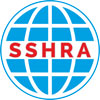
Wandah Wibawanto
Digital Art Lecturer, Universitas Negeri Semarang, Semarang, Indonesia
Article
Art education faces a situation where changes in various aspects of life, be it economic, social, political, and cultural, occur so fast. The compaction of production time and consumption distance causes trends and tastes of people to change in a short time and the emergence of ephemerality in visual literacy. The education system, including in the field of art education, has not been able to anticipate the overall character of the acceleration of life (dromology) (Piliang, 2017). The knowledge and skills offered through conventional education are often far behind the demands of the times. This condition requires continuous renewal and rejuvenation of knowledge in the education system, so that gaps between the education system and the dynamics of science can be anticipated.
Technology is chosen, utilized, and socialized by the community because technology can open up new experiences to be more flexible in self-expression (media as language expression). In the era of a digital culture where various forms of visual stimuli are the main important instruments for interacting and conveying information, prioritizing ways of thinking that involve art and providing art education that is parallel to other applied fields (Leysath, 2016). Art becomes interdisciplinary, collaborative, inclusive, and fundamental (Walker, 2001).
Art education when associated with visual literacy must include four elements, namely education senses, media as language expression, imagining, and imagination. The involvement of technology is not only limited to changing the media as a medium of expression but also raises a new paradigm that needs to be specifically responded to. Art education has a very important function as a means or tool to develop aesthetic awareness or sensitivity, develop creativity, and become a means for a human to express themselves and their environment. In this context, art education leads to two things, namely as a medium for aesthetic education (development of appreciation) and as a medium for creative education (development of creativity and expression). Art education serves as a milestone in the development of personal, social, and historical responsibility for general education. In line with the ideology of humanistic education, art education substantially has a vision and mission to humanize humans through art activities, namely developing an appreciation, creativity, and expression so that a critical, creative, and conscious person is formed as a member of society who respects values. the culture of the people.
The paradigm that needs to be considered for art education today is the Technoprogresivism Paradigm. Technoprogressivism is an ideological stance with roots in enlightenment thinking that focuses on how human growth advances by the convergence of technological progress and democratic social change. Technoprogressivism argues that technological innovations can be very empowering and liberating when they are regulated democratically and transparently for security and progress, and then made available universally and equitably (Hughes, 2014). Technoprogressivism emphasizes that “technological progress” must focus on ethical and social as well as scientific and technical dimensions. For most techno progressive, the growth of scientific knowledge or the accumulation of technological power will not represent the achievement of proper progress unless and until accompanied by a fair distribution of the costs, risks, and benefits of this new knowledge and capacity.
When this paradigm is adopted in art education, it must fulfill 4 techno progressivism aspects, namely ethical, social, technical, and policy. Ethical means that technological development is not an eliminator from the local culture that is inherent in society but a facilitator to increase the contribution of local culture. Social means technology should not make a person individualistic and lose his social aspect. Technical means that changes in art education when penetrated by technology are often technical, the aesthetic, taste, and imagination aspects do not undergo significant changes. Policy means the use of technology needs to be regulated by specific policies related to the position of technology use and its impact on the lives of the users of society.
In conclusion, the techno progressivism paradigm for art education will have several characteristics that shape it, namely:
- humanistic, progressive, and multicultural.
- driven by technology acceleration
- triggered by market demand related to the creative economy
- based on local culture. The unique aspect of each cultural group acts as a Unique Point Preposition which in the concept of the creative economy is the basic capital of the creative process.





